Hmong farmers co-op blossoms
By Rebekah Denn, photos by Meryl Schenker
This article was originally published in April 2024
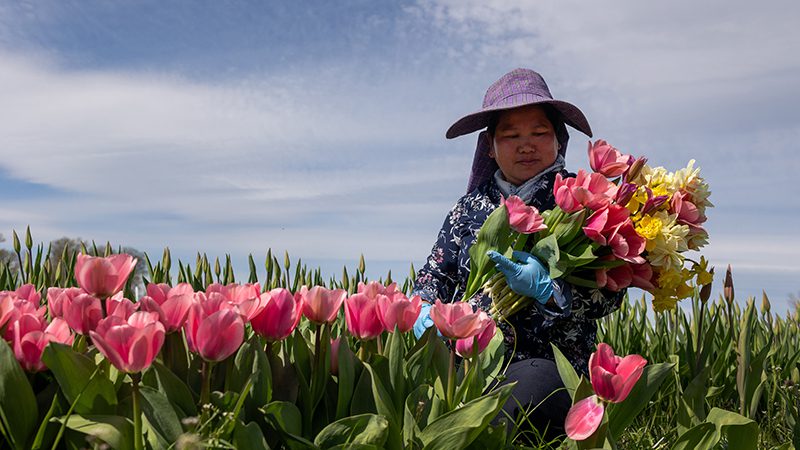
Local Hmong farmers known for their glorious flower bouquets are getting a cooperative boost.
The new addition is the Hmong Farmers Co-operative, bringing together 15 farms to provide group opportunities and supports that individuals can’t achieve on their own. The co-op is stocking its signature bouquets at PCC stores, beginning soon with the Kirkland and Redmond PCC stores with plans to expand to other locations.
“They’re just gorgeous bouquets. Literally, this is the stuff that’s at Pike Place Market — they’re going to be stunning,” said Noah Smith, grocery merchandiser for PCC.
The Hmong farming community began coalescing here in the 1970s, when many Hmong farmers resettled in the Seattle area as refugees after the Vietnam War. In 1982 the nonprofit Indochinese Farm Project was founded in King County, connecting those farmers with land on the Eastside and a new emphasis on flowers.
Bryant Her, the co-op’s general manager, was born and raised in California but now farms seven acres in Snohomish County with his family. His parents were farmers, but he originally worked as a mechanic until meeting his future wife, a farmer in Washington state. “Just seeing those beautiful flowers out in the field” helped change his goals, he said. The couple has nine children, and “I want to pass on this heritage to them.”
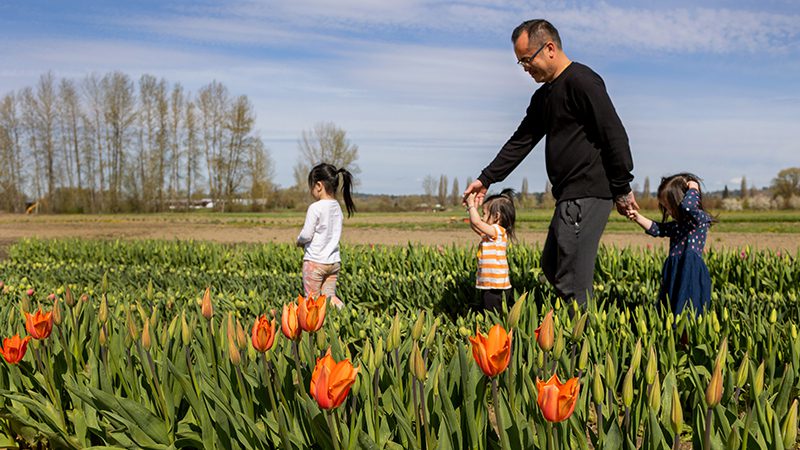
Their floriculture season typically begins with spring daffodils — an array that goes beyond the standard displays. “You go out in the fields, you get yellow, you get pink, white — all sorts of different varieties,” Her said.
Next come tulips, then peonias, dahlias, and Her’s favorite — all sorts of sunflowers. Depending on acreage and tastes, some farmers add lilies or gladioli or snapdragons or dainty godetias. Fall brings cabbage flowers, then a break for dried bouquets until the cycle begins again.
Even farmers who grow the same flowers have distinct styles, said Her. Their color themes might vary, or the way they compose bouquets.
And in some ways, growing the flowers is the most straightforward part of the farmers’ work.
“They’re doing so much with what they have, and some of what they have is very limited,” said Sara Johnson, the co-op’s sales manager.
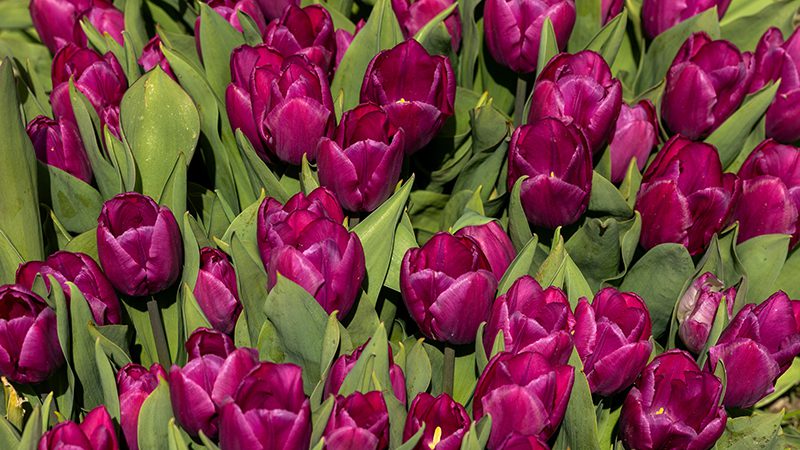
Not all farmers speak fluent English or can access technology and equipment that could help increase sales. Farmland is hard to find and expensive. Many of the Hmong farmers in this area rent land rather than owning it, and are frequently displaced and disrupted. The individual small farmers don’t have the capacity or infrastructure to regularly stock a business like PCC.
“But with strength in numbers, we’re able to manage this and do it together,” Johnson said.
The co-op rents space in Carnation to sort and wash and assemble bouquets and store delivery vehicles. As orders come in, the first farmers in line confirm if they can fulfill the requests or whether they should go on to the next farmer on the list.
“We kind of came up with a round robin so it would be fair to all members,” Her said.
Meet the Washington Hmong Farmers Co-op
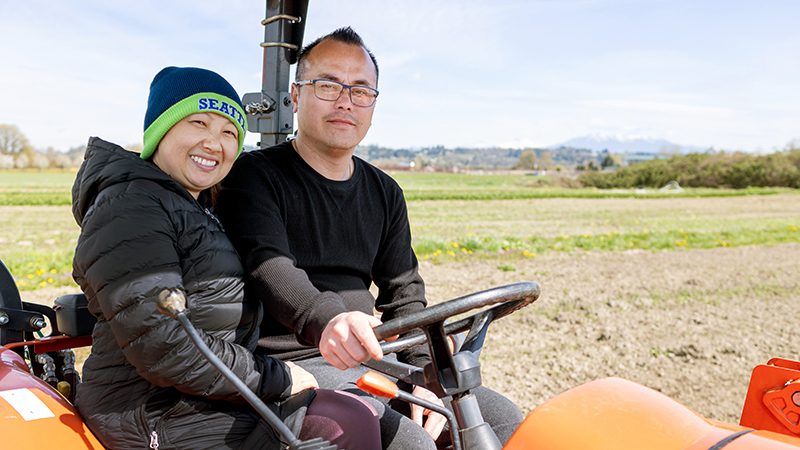
The co-op was originally founded in the wake of the COVID-19 pandemic.
“Flowers and produce have a timespan on them,” Her said. When markets shut down in 2020 it was catastrophic.
But community organizations like the Hmong Association of Washington rallied around the farmers and said “We’re not going to let you guys slip…we’re banding together and we’re going to make this happen,” said Johnson. (See this article for one story of community support.)
Mother’s Day drives that year sold hundreds of bouquets, and the cooperation continued even as the pandemic eased. With support from organizations like the Northwest Agriculture Business Center, a founding group of six farms formed what they call America’s first Hmong farmers co-op in 2022. This year will be its first full year of sales, following roadblocks that included the death of an earlier manager.
Beyond grocery stores, early customers include restaurants, nonprofits and others holding gala events. Some farmers grow produce as well as flowers, and Johnson has focused recently on how they can supply food banks and other hunger relief networks.
The group is starting small, but Johnson sees untold possibilities. “We have agritourism in this state for flowers – people visit tulip fields. We don’t have that yet, but could we? We sure could…,” she said. “(It’s) humble beginnings, with our rented aggregation space and our one delivery vehicle, but there’s so much to look forward to.”
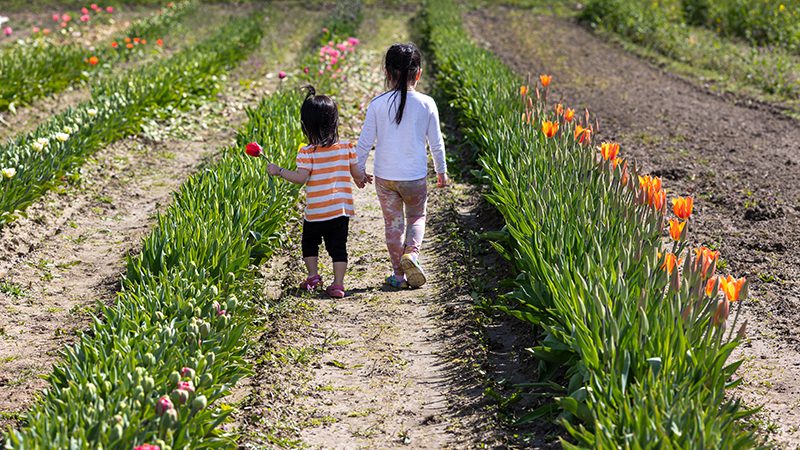
The Year of the Co-op
PCC is marking 2024 as The Year of the Co-op through education on co-op principles and celebrating our members. Interested in learning more? Start with these articles from the Sound Consumer archives:
- A Q&A with grocery co-op expert Jon Steinman
- An excerpt from Jon Steinman’s book, “Grocery Story
- A look at the start of the modern co-operative movement
- Learn about different types of co-ops and Rochdale’s cooperative principles
- Creating a cooperative economy
- How Patty Pan became a worker-owned cooperative
- PCC’s founding father, John Affolter — “Mr. Co-op”
